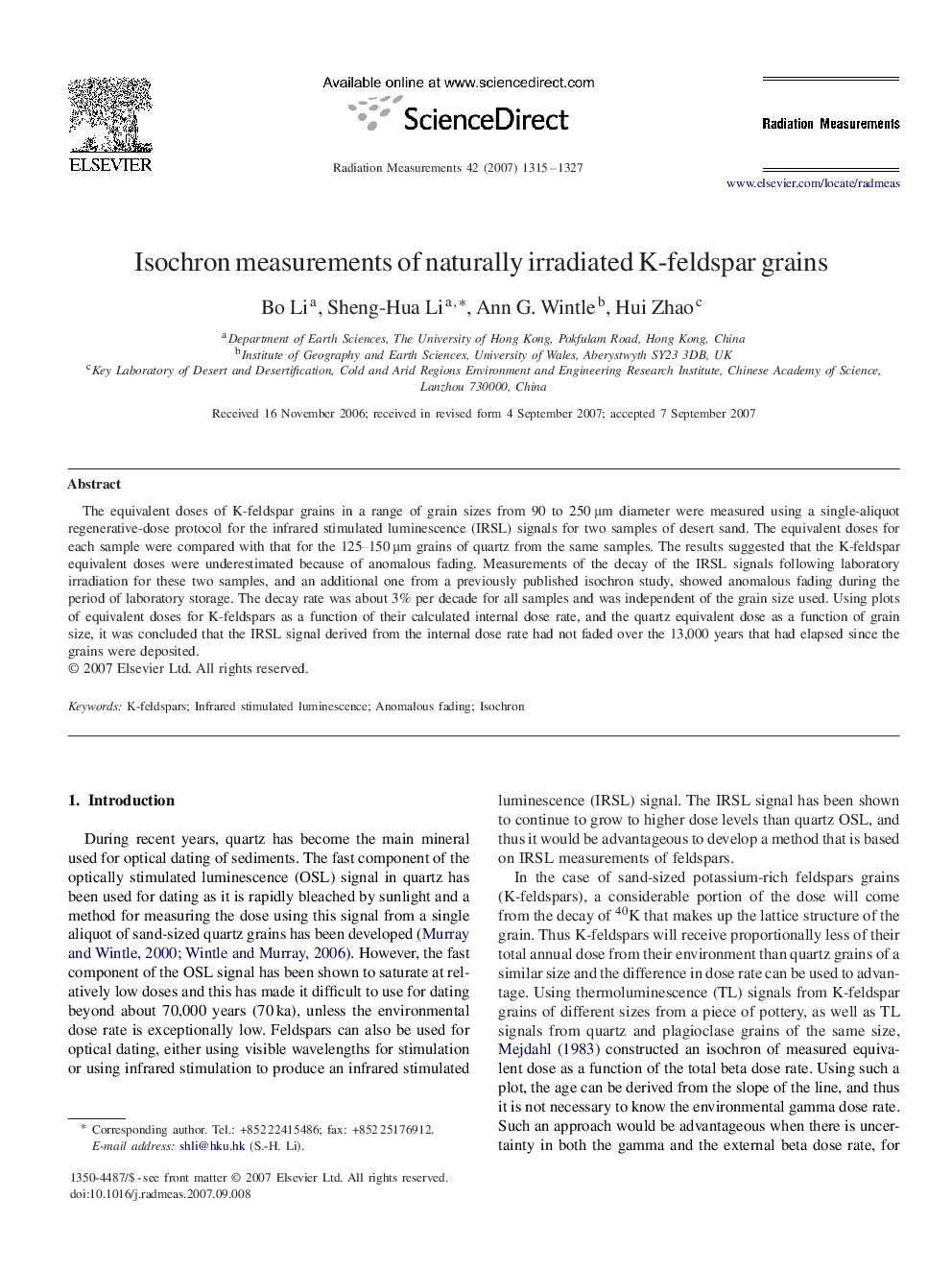| Article ID | Journal | Published Year | Pages | File Type |
|---|---|---|---|---|
| 1882051 | Radiation Measurements | 2007 | 13 Pages |
The equivalent doses of K-feldspar grains in a range of grain sizes from 90 to 250μm diameter were measured using a single-aliquot regenerative-dose protocol for the infrared stimulated luminescence (IRSL) signals for two samples of desert sand. The equivalent doses for each sample were compared with that for the 125–150μm grains of quartz from the same samples. The results suggested that the K-feldspar equivalent doses were underestimated because of anomalous fading. Measurements of the decay of the IRSL signals following laboratory irradiation for these two samples, and an additional one from a previously published isochron study, showed anomalous fading during the period of laboratory storage. The decay rate was about 3% per decade for all samples and was independent of the grain size used. Using plots of equivalent doses for K-feldspars as a function of their calculated internal dose rate, and the quartz equivalent dose as a function of grain size, it was concluded that the IRSL signal derived from the internal dose rate had not faded over the 13,000 years that had elapsed since the grains were deposited.
